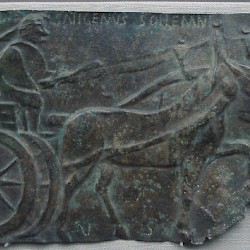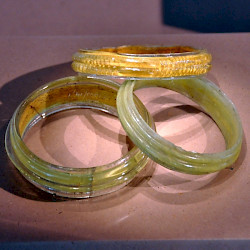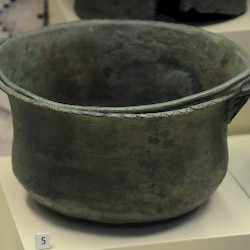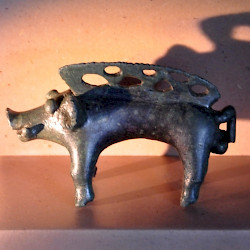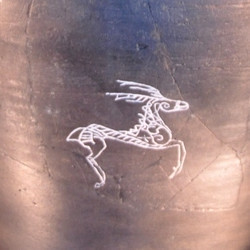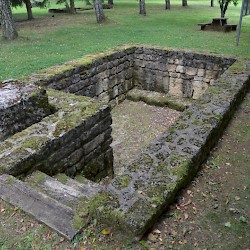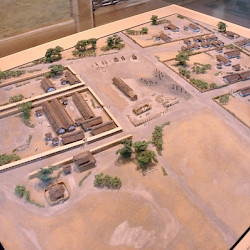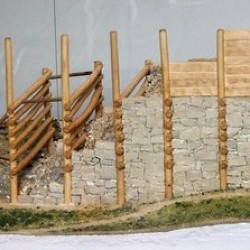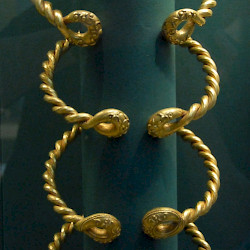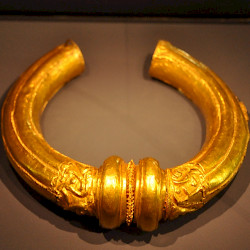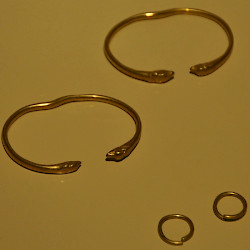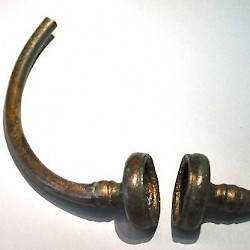Celts
Q35966Celts: common name for the Iron Age civilizations of Western Europe, more or less identical to the La Tène culture.
Names
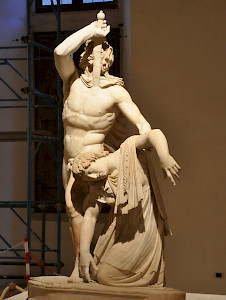
In Antiquity, the meaning of the name "Celts" has changed considerably. Originally, it appears to have referred to the inhabitants directly north of Massilia (modern Marseilles). The Greek author Ephorus of Cyme used it for all people in the far west, as opposed to the southern Libyans, the eastern Persians, and the northern Scythians. This usage allowed Graeco-Roman historian Cassius Dio (early third century CE) to call the people living on the east bank of the Rhine Celtic. Since it now meant "people living outside the Roman Empire", it could be applied to the inhabitants of Ireland, the "Celtic Christians" of Late Antiquity. In the modern age, the Irish language was called a Celtic language; hence, all people speaking related languages were called Celts.
Related names are Gallic (for the inhabitants of Gaul) and Galatian (for the Celtic warriors who settled in Central Anatolia. Archaeologists use the name as synonym for the La Tène culture.
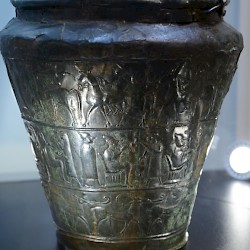 Vače, Situla |
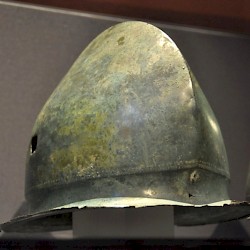 Zenjak, Hallstatt helmet |
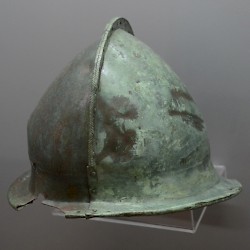 Krk, Hallstatt helmet |
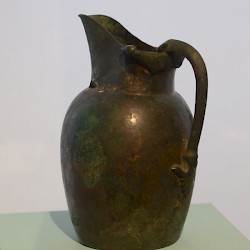 Hatten, Hallstatt jar |
A Pan-European System
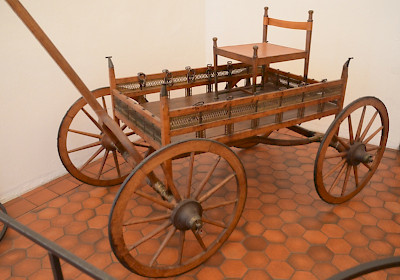
The ethnogenesis of the Celts took place in the general region of the Urnfield Culture (Late Bronze Age; 1300-800/750 BCE, also known as Hallstatt A and Hallstatt B) and the Hallstatt Culture (Early Iron Age; 800-450 BCE; also known as Hallstatt C and Hallstatt D).
It is possible to view the emergence of the Celts as an autonomous development. In the region north of the Alps – let’s say Champagne, Lorraine, the Alsace, the Black Forest, Bavaria, and Bohemia – iron, some tin, and copper were found, and salt as well. Those who exploited the mines became rich and exchanged their products for textiles, foodstuffs, furs, skins, and slaves. This created an east-west trade network between Champagne and Bohemia; the new elite showed its capital with four-wheeled chariot burials. Among the main centers were the Heuneburg and Glauberg.

An alternative perspective stresses the trade between the Greek and Italian cultures in the south and the suppliers of raw materials in the north, where tin and amber were extracted. The Hallstatt elite acted as some kind of middleman. From their civilization gradually emerged the La Tène culture, which has some remarkable hilltop settlements (e.g, Titelberg) and was to last from about 450 BCE until the Roman conquest of Gaul and the Upper Danube region.
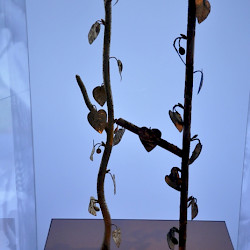 Manching, Golden trees |
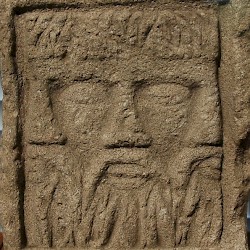 Naix-aux-Forges, Triple-faced Celtic deity |
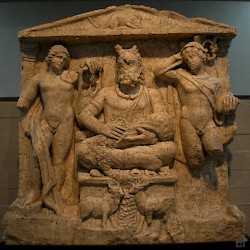 Reims, Altar of Cernunnos (with Apollo and Mercurius) |
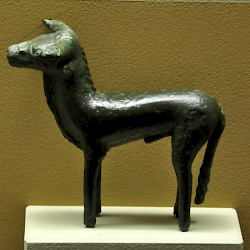 Weltenburg, Statuette of a bull |
Expansion
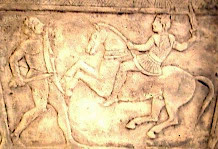
In the fifth century BCE, the Celtic expansion started. We read about tribes that move, indicating migration, and we read about bands of warriors who fight as mercenaries. The four-wheeled chariots were replaced by more maneuverable two-wheeled chariots.
There must have been processes of self-Celtization as well. The Provence became Celtic (e.g., Ensérune). The plains of the river Po were occupied in the course of the fifth century; a group of Senones defeated the Roman army at the Allia and sacked Rome (387 BCE). Later, these Celtic warriors were employed as mercenary by Dionysius I, the tyrant of Syracuse.
Other groups reached the Balkans. For example, the Scordisi reached what is now called Serbia. Among the notable settlements are Singidunum and Viminacium. In the late 280s, Celtic warriors, no doubt reinforced with people from the Danube area, invaded Thrace and Macedonia, reaching Delphi in the year 279. By now, the Balkan peninsula was completely destabilized. The rise of Dacia may be a response to the Celtic presence, or alternatively be a Celtic dynasty taking control of the Lower Danube area.
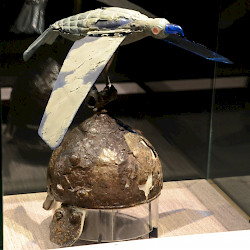 Ciumești, Celtic helmet |
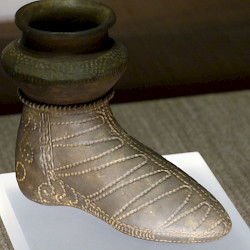 Curtuișeni, Shoe-shaped bottle |
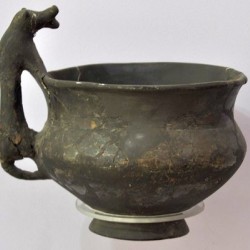 Viminacium, Celtic cup |
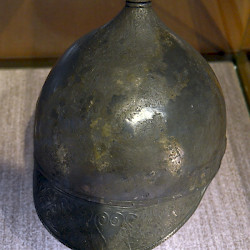 Celtic helmet from Transylvania |
Galatians
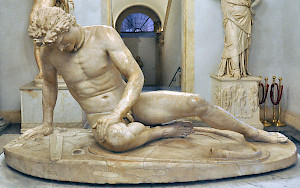
The Galatians belonged to the La Tène culture, although they may have spoken a language that was closer related to Germanic. In any case, they were employed as mercenaries by the leaders of Bithynia and reached Central Anatolia, where they were defeated by the Seleucid king Antiochus I Soter (275: Battle of the Elephants) and by the Pergamene leader Attalus I Soter (241). The Pergamon Altar, the sculpture of the Galatian suicide, and the famous statue of the Dying Gaul were created to commemorate this victory. The main Galatian settlement was Ancyra.
Final Phase
By the second century BCE, the Gallic tribes had started to change into early states, with magistrates, official rules for the kingdoms, more or less regular armies, and coinage. This made their towns, often built on hilltops, attractive goals for the Roman armies. Several Celtic kingdoms can be identified, like Noricum (capital Virunum at the Magdalensberg) and the realms of the Vincelicians (capital Manching), and Aedui (capital Bibracte).
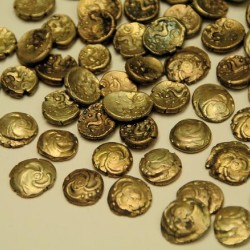 Heers, Treasure of Eburonian coins |
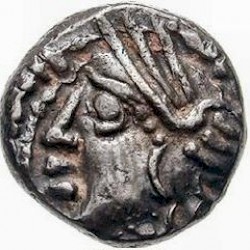 Coin of the Lingones |
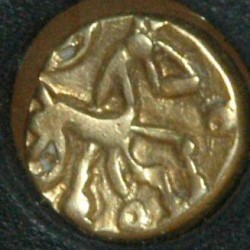 Coin of the Nervians |
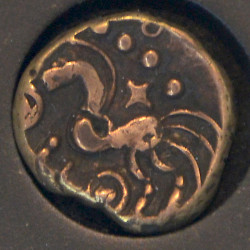 Coin of the Eburones |
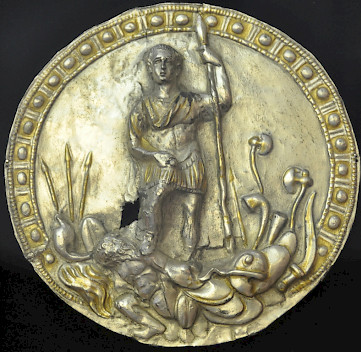
The Romans conquered the plain the Po in the second half of the third century BCE. They established their power in the Provence in the course of the next century, while Julius Caesar conquered Gaul in the mid-first century. The emperor Augustus ordered the conquest of the area north of the Alps: Vindelicia (capital: Manching), Raetia, the kingdom of Noricum, and finally Pannonia in 9 BCE.The ancient sources do not call Britain Celtic. The Iron Age states of what is now England were conquered by the emperor Claudius. The area became romanized. What remained of old Europe was forced to the periphery: Ireland, Wales, and Scotland.
Literature
Barry Cunliffe, The Ancient Celts (1997).
